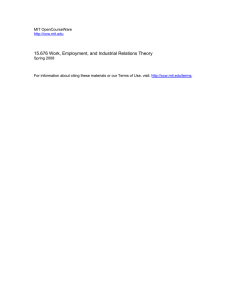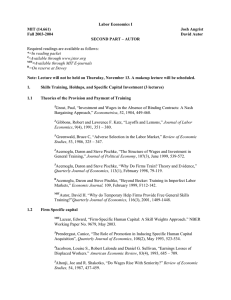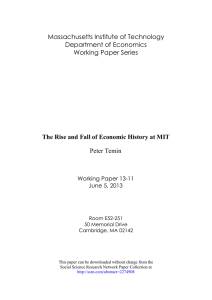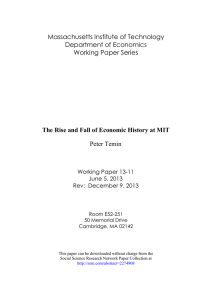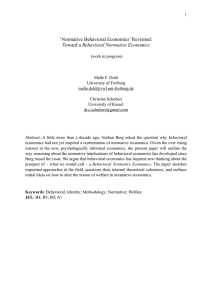Political and public economics
advertisement
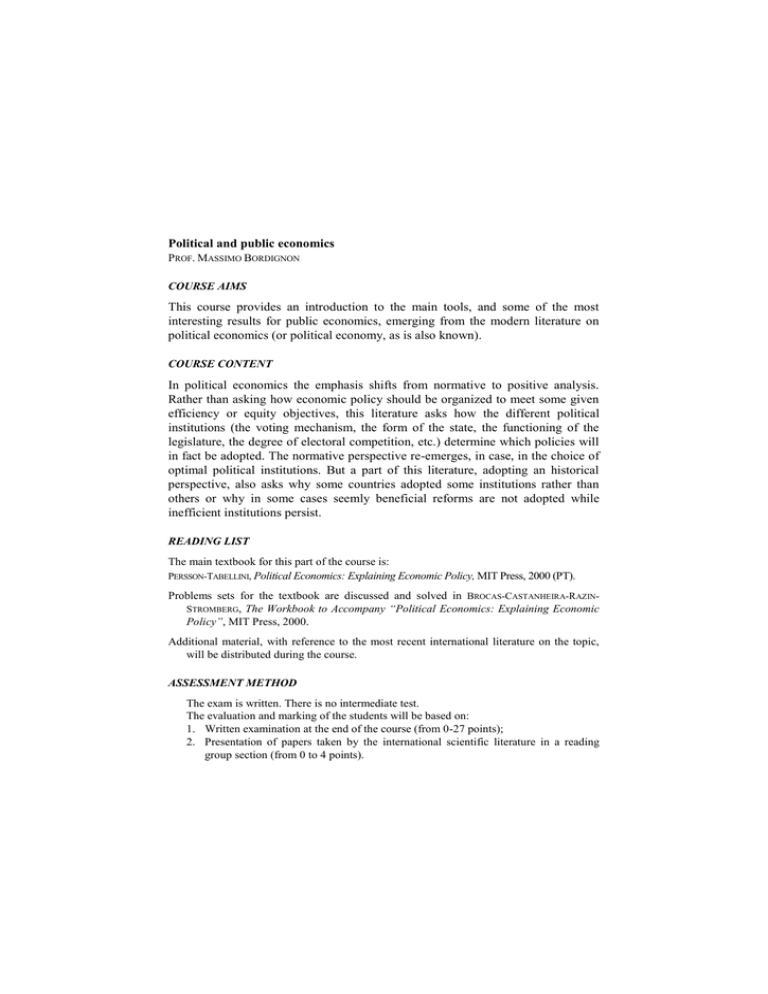
Political and public economics PROF. MASSIMO BORDIGNON COURSE AIMS This course provides an introduction to the main tools, and some of the most interesting results for public economics, emerging from the modern literature on political economics (or political economy, as is also known). COURSE CONTENT In political economics the emphasis shifts from normative to positive analysis. Rather than asking how economic policy should be organized to meet some given efficiency or equity objectives, this literature asks how the different political institutions (the voting mechanism, the form of the state, the functioning of the legislature, the degree of electoral competition, etc.) determine which policies will in fact be adopted. The normative perspective re-emerges, in case, in the choice of optimal political institutions. But a part of this literature, adopting an historical perspective, also asks why some countries adopted some institutions rather than others or why in some cases seemly beneficial reforms are not adopted while inefficient institutions persist. READING LIST The main textbook for this part of the course is: PERSSON-TABELLINI, Political Economics: Explaining Economic Policy, MIT Press, 2000 (PT). Problems sets for the textbook are discussed and solved in BROCAS-CASTANHEIRA-RAZINSTROMBERG, The Workbook to Accompany “Political Economics: Explaining Economic Policy”, MIT Press, 2000. Additional material, with reference to the most recent international literature on the topic, will be distributed during the course. ASSESSMENT METHOD The exam is written. There is no intermediate test. The evaluation and marking of the students will be based on: 1. Written examination at the end of the course (from 0-27 points); 2. Presentation of papers taken by the international scientific literature in a reading group section (from 0 to 4 points). For a final potential maximum score of 31 (trenta e lode). The written examination is made up of 6 questions, among which students need to choose and answer 4 in a two hour time span. Each question carries the same weight in the final marking. Questions are general and are meant to assess a student understanding of some relevant parts of the literature covered in the course, letting them choose the papers or the models they want to use to answer the question. One question is an analytic exercise, usually a slight development of the economic models covered by the lecturer during the course. To take into account students heterogeneity (some of them come with a strong backgrounds in Economics and are enrolled in strict Economics programs, others choose the course although being enrolled in other disciplines, such as International Management or Political Science) typically economic students are asked to solve the exercise in the question sheet, while this is voluntary for students coming from different disciplines. A substantial part of the course is devoted to classes that explain students how to solve the different economic models presented and discussed during the main lectures.






